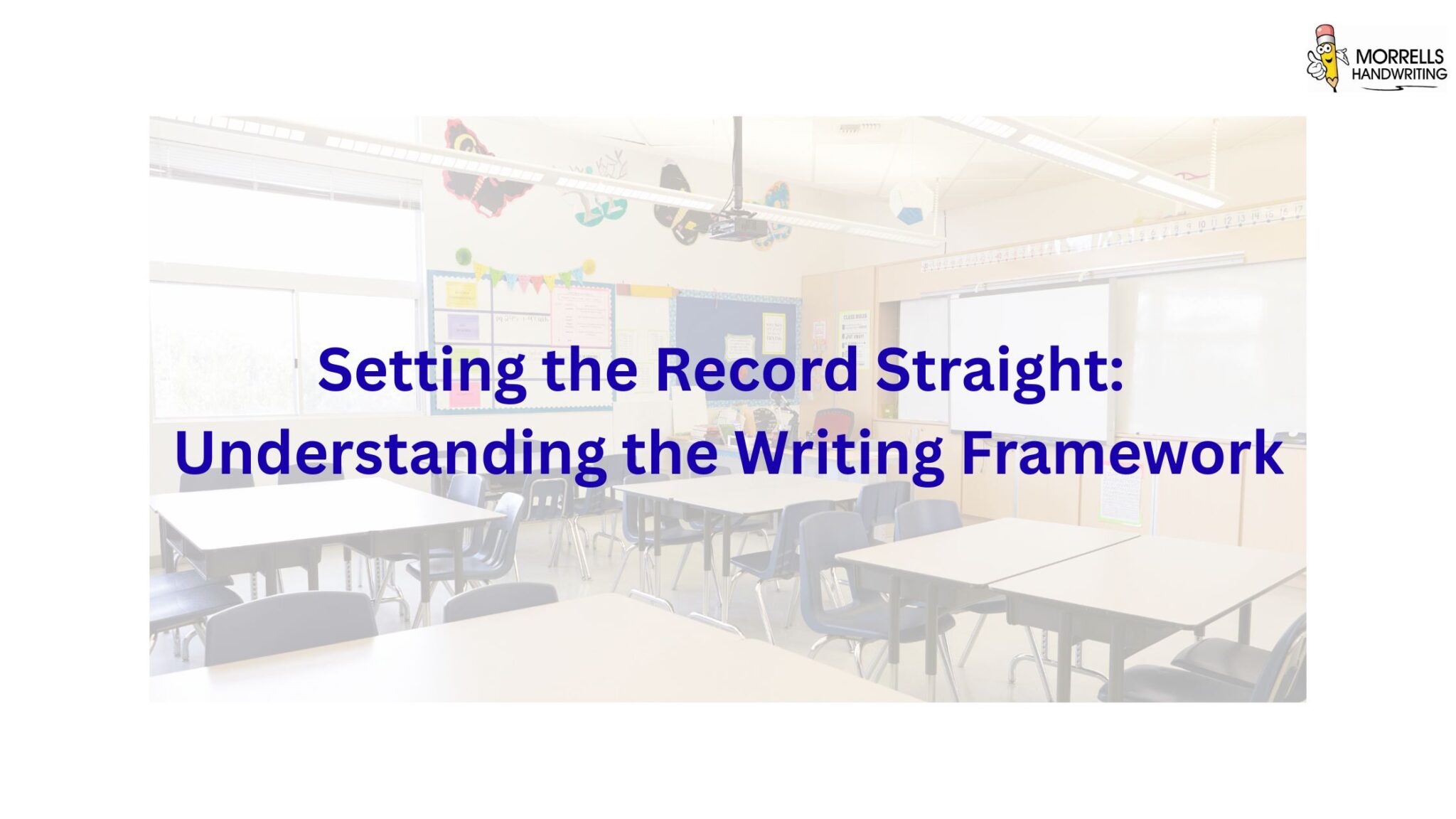The Department for Education’s new Writing Framework has prompted debate and, in some cases, misunderstanding among educators and parents. We want to clarify what the framework really says, and to dispel some of the most common misconceptions.
Drawing on years of experience supporting schools and working with the Government on handwriting guidance, Sue Smits sets the record straight.
Misinterpretation 1: “The framework promotes more formal, worksheet-style teaching.”
The Misunderstanding
Some teachers and parents are worried that the increased emphasis on literacy outcomes and assessment will inevitably lead to more formal, worksheet-based lessons.
The assumption is that to meet expectations, teachers must introduce structured written exercises earlier, prioritising output over play. This is a misinterpretation that has led to fears that the joy of child-led discovery could be replaced by premature instruction and rote tasks.
What the framework actually says
- The EYFS framework explicitly emphasises high-quality, child-led play as the foundation of early writing development.
- It encourages writing to emerge through meaningful, hands-on experiences such as role play, storytelling, drawing, mark making, and outdoor exploration.
- Adults are guided to model writing naturally in context (e.g., jotting down a shopping list in the role-play area), not to impose rigid instruction.
- Crucially, assessment is based on observation within these natural play contexts, rather than on artificial tasks set up to “prove” ability.
It is important to note, writing might emerge through:
- Drawing and adding labels to pictures.
- Acting out stories and then attempting to write parts of them.
- Making signs, lists, or notes during imaginative play.
- Encouraging mark making in outdoor or sensory play.
Takeaway
The new writing framework does not ban or limit play-based learning. In fact, it recognises play as essential for effective early writing development. The key is intentional, well-supported, and responsive teaching within playful contexts.
Misinterpretation 2: “We’re not allowed to use terms like ‘emergent writing’ or ‘mark making’ anymore.”
The Misunderstanding
Another misconception is that the framework bans widely used terms such as emergent writing or mark making. The belief is that shifting language somehow signals a shift in practice, with practitioners expected to drop these phrases and adopt a stricter focus on letter formation from the start.
The Reality
- The framework does not prohibit these terms. While some wording may have shifted, there is no ban.
- What really matters is that teachers understand what each child’s marks mean, how they are progressing, and how best to support their next steps.
- The developmental journey remains unchanged: children move from mark making, to symbolic representation, to letters, and finally to words. The language used to describe that journey is less important than the practitioner’s understanding of it.
Takeaway
Teachers can continue to use familiar terms if they wish. The focus should be on supporting progress, not policing terminology.
Misinterpretation 3: “Phonics and handwriting must be taught together.”
The Misunderstanding
A further misinterpretation is that phonics and handwriting should be combined, taught in the same sequence and lessons. Some believe the framework’s emphasis on both areas implies they should be aligned. This assumption risks conflating two very different learning processes and overlooking the distinct developmental needs involved in each.
The Reality
- The framework is clear: phonics and handwriting should be taught separately, each with its own systematic programme.
- Handwriting focuses on pencil grip, posture, and developing movement patterns into automatic, legible letter formation.
- Handwriting is taught in an order based on motor complexity – starting with simpler shapes before moving on to more challenging ones – not in the same order letters are introduced in phonics.
Why this matters
- If handwriting is taught strictly in phonics order (e.g. s-a-t-p-i-n), children must constantly switch between very different motor movements, slowing progress and risking poor habits.
- Separating them allows children to embed handwriting fluency while also developing strong phonics knowledge without additional cognitive load.
- This is especially important for children with motor difficulties or SEND, who may need extra focus and support in handwriting to build confidence.
Takeaway
Keeping phonics and handwriting separate is not duplication – it’s good practice. It helps children master both skills in their own right, laying the groundwork for fluent, confident writing later on.
The Writing Framework is not about increasing formality or reducing play; it is about supporting children to become fluent, confident writers through developmentally appropriate teaching.
By separating myths from facts, teachers can confidently implement the framework in a way that benefits all learners.


